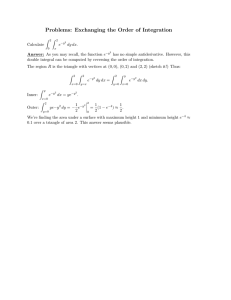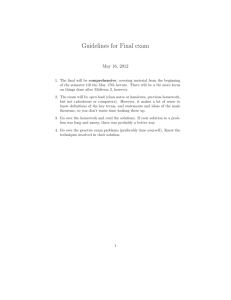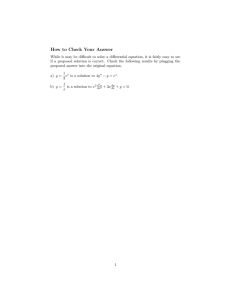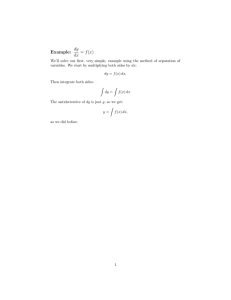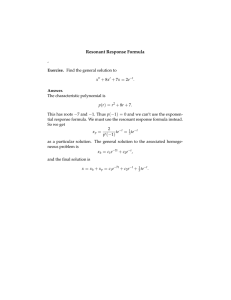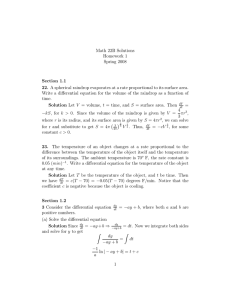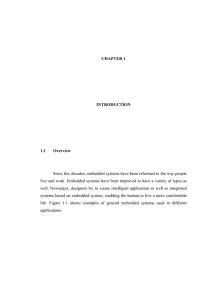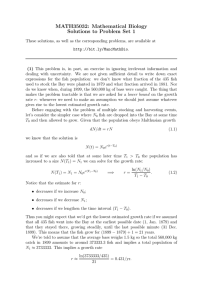Average Bank Balance
advertisement
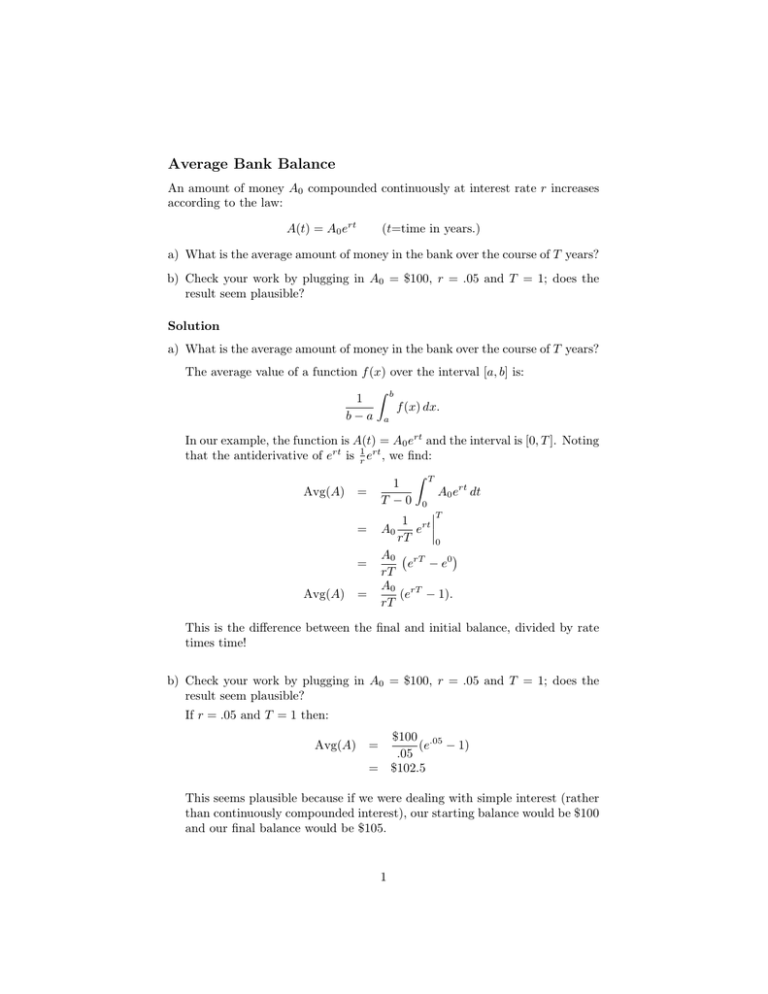
Average Bank Balance An amount of money A0 compounded continuously at interest rate r increases according to the law: A(t) = A0 ert (t=time in years.) a) What is the average amount of money in the bank over the course of T years? b) Check your work by plugging in A0 = $100, r = .05 and T = 1; does the result seem plausible? Solution a) What is the average amount of money in the bank over the course of T years? The average value of a function f (x) over the interval [a, b] is: � b 1 f (x) dx. b−a a In our example, the function is A(t) = A0 ert and the interval is [0, T ]. Noting that the antiderivative of ert is 1r ert , we find: Avg(A) 1 T −0 = T A0 ert dt 0 �T 1 rt �� A0 e � rT 0 � A0 � rT e − e0 rT A0 rT (e − 1). rT = = Avg(A) � = This is the difference between the final and initial balance, divided by rate times time! b) Check your work by plugging in A0 = $100, r = .05 and T = 1; does the result seem plausible? If r = .05 and T = 1 then: Avg(A) $100 .05 (e − 1) .05 $102.5 = = This seems plausible because if we were dealing with simple interest (rather than continuously compounded interest), our starting balance would be $100 and our final balance would be $105. 1 MIT OpenCourseWare http://ocw.mit.edu 18.01SC Single Variable Calculus�� Fall 2010 �� For information about citing these materials or our Terms of Use, visit: http://ocw.mit.edu/terms.
